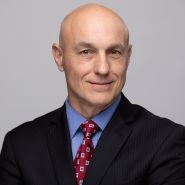Claim Interpretation, a source of unhappiness for U.S. Patent Applicants and Patentees
- March 23, 2016
- Article
Associated People
Associated Practices
Associated Technologies
According to Samaveda, one the four ancient core Hindu scriptures, “people of double standards never experience happiness.” The U.S. patent system relies on a double standard for claim interpretation: during examination, USPTO Examiners must give claims their “broadest reasonable interpretation”, while during patent litigation, US judges must interpret claims under a different standard, often referred to as the “Phillips” standard. This double standard can lead to unhappy results for applicants and patentees.
Under the “broadest reasonable interpretation” standard (or “BRI”), the claims must be broadly interpreted “in light of the specification” as understood by one of ordinary skill in the art. The policy behind this rule is that the USPTO must act as a gatekeeper, in charge of issuing only claims free from any ambiguity such that the public can have clear notice of the scope of the patents. Claim interpretation is thus used as a procedural tool to force applicants to clarify their claims via amendments, which are readily available during examination.
Even sound policies, however, can have unintended consequences. In practice, the “in light of the specification” qualifier is not always given much weight. Applicants can then be surprised by the overly-broad interpretation given to their claims, which could be significantly broader than what they intended. The result can lead to frustrating rejections over prior art that initially seemed far removed from the invention, but became highly relevant under an overly broad interpretation.
For example, in a 2015 case, the claims recited a wireless communication module, which was part of an electronic device such as a mobile telephone. The Examiner interpreted “wireless” as “using no wire” and rejected the claims based on a reference disclosing a module that communicates via a metal contact between a memory card and a computer, i.e., without any wires. The USPTO appeal panel affirmed the rejection, which prompted the Applicant to appeal the USPTO decision to the Court of Appeals for the Federal Circuit (CAFC) – a lengthy and expensive process. The appeals court reversed the rejection, but only because of a sentence in the specification that explained that the communication system relied on electromagnetic or acoustic waves through atmospheric space rather than along a wire.
By contrast, claims are interpreted during patent litigation based on the standard outlined in the decision in Phillips v. AWH Corp. (Fed. Cir. 2005). Under this standard, the judge places a strong emphasis on the context of the patent, i.e., the language of the claims, the patent specification, the prosecution history, the prior art considered during prosecution, and the technology at issue. In practice, judges scrutinize every sentence of the specification, and every argument made during prosecution. Generally, but not always, a claim interpretation under Phillips is narrower than under BRI.
For example, in a case decided by the CAFC last month, the claim recited “a plurality of security devices each associated with one of said microprocessors.” The question was whether a “security device” is a stand-alone device, external and separate from the microprocessor, or can it also be incorporated inside a computer along with the microprocessor. The plain meaning of the claim (“associated with”) suggested that both possibilities were covered by the claims, and that is probably how an examiner would have interpreted the claims. The judge, however, held (and the CAFC agreed) that the security device was a stand-alone device, external to any computer that included the microprocessor. This interpretation was based on the embodiments disclosed and the advantages mentioned in the specification about the external nature of the security devices. The unhappy result for the patentee was a finding of non-infringement.
Finally, an interesting question is currently in front of the U.S. Supreme Court: is BRI the proper standard in post-grant proceedings, such as Inter Partes Reviews (IPRs)? The Court should answer the question this summer in the case In re Cuozzo Speed Tech. No predictions here, although many commentators have observed that the Supreme Court rarely takes a patent case in recent years without making a change in the law. The current standard for IPRs is BRI, which tends to favor third party petitioners because broad claim interpretations expand the universe of prior art available against patent claims.
In the meantime, the CAFC continues to apply BRI but understands that the standard could change soon. In a recent decision, the appeals court even provided an interpretation under both standards. The case involved a coaxial cable including a “continuity member” that extended electrical grounding continuity through a connection. The issue was whether this “continuity” was merely physical, or was also temporal. The Court held that the continuity was merely physical under BRI (and thus the claims were obvious over the prior art), but that it was both physical and temporal under Phillips (and presumably not obvious).
Regardless of the Supreme Court’s decision for the standard to be applied for IPRs, the double standard will continue to exist between original examination and patent litigation. This double standard will continue to frustrate both applicants and patentees.
Recent Publications
5 IP Rules to Know to Protect Your Business in the United States (article in French)
Coaching INPI Newsletter










 Counseling & Strategic Advice
Counseling & Strategic Advice IP Transactions
IP Transactions Litigation
Litigation PTAB Proceedings
PTAB Proceedings Start-Up
Start-Up Technology Transfer
Technology Transfer Trademark & Designs
Trademark & Designs U.S. Patent Procurement (Application Drafting & Prosecution)
U.S. Patent Procurement (Application Drafting & Prosecution)








